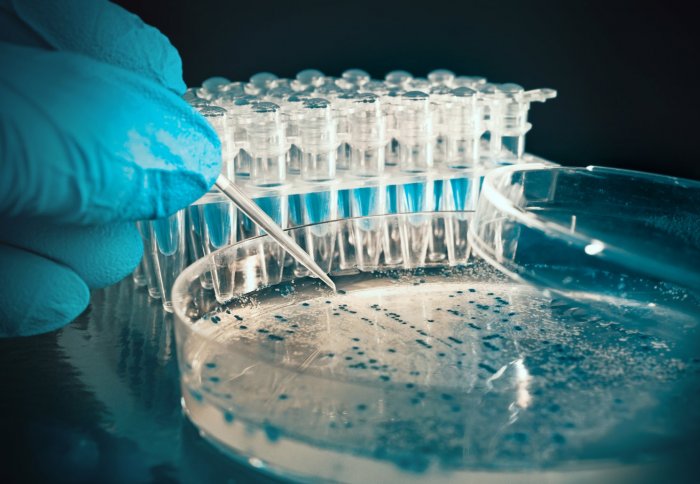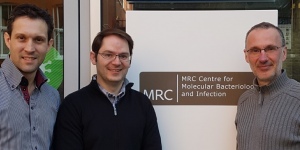

Research suggests it is possible to quickly and accurately diagnose some the most dangerous and drug-resistant types of bacterial infections.
The study also says the test could be performed using equipment already owned by most hospitals.
Bacteria have been gradually evolving to become resistant to the antibiotics used to treat them. Over the last few years, scientists have found evidence that some bacteria have become resistant to a last-resort antibiotic called colistin.
The exciting thing about this technique is that it relies on technology that is already available in most hospitals. This means that it could be rolled out quickly and cheaply, and potentially have a rapid impact on tackling drug resistance.
– Dr Gerald Larrouy-Maumus
Now, in a presentation at the 27th European Congress of Clinical Microbiology and Infectious Diseases (ECCMID), researchers from Imperial College London and the South Paris University described how they were able to test bacteria to quickly tell whether they were resistant to colistin, and how easily they might pass this resistance on to other bacteria.
They say this is an important discovery because knowing which patients have these most dangerous infections means it is possible to use quarantine measures to halt their spread and stop the rise of drug resistance.
The research was a collaboration between Dr Laurent Dortet, from the South Paris University, France, and Dr Gerald Larrouy-Maumus and Professor Alain Filloux from the Department of Life Sciences at Imperial.
Inactivating antibotics
They studied bacteria called Escherichia coli and Klebsiella pneumoniae. These are both members of a group of bacteria called Enterobacteriacae that can cause gastroenteritis, urinary tract infections, lung diseases such bronchitis and pneumonia, and even sepsis.
Some strains of these bacteria have become resistant to nearly all available antibiotics. They do this by producing enzymes that inactivate the antibiotics, for example extended-spectrum b-lactamases and carbapenemases.
This means that colistin often remains the only treatment option for these multidrug resistant bacteria. Unfortunately, some have now also developed resistance to colistin.
Previous research has shown two different types of colistin resistance exist in bacteria. One type, called chromosome-encoded resistance, can only be passed on when bacteria grow and divide to form new bacteria cells.
The other type, called plasmid-encoded resistance, is considered more dangerous because it can be passed on from one type of bacteria to another completely different type of bacteria.

Dr Dortet, Dr Larrouy-Maumus and Professor Filloux
Dr Dortet told the congress: “This plasmid-encoded resistance is particularly worrying because it has the potential to spread quickly and easily and, if that happens, last resort drugs like colistin could also become obsolete.
"If, on the other hand, we are able to rapidly identify bacteria that have this type of resistance, we can take measures to stop its spread. This might include isolating the patient in a separate room where they are treated by dedicated medical staff.”
Quick and cheap
The team tested 134 different colonies of bacteria using a machine called a mass spectrometer. Mass spectrometers are found in testing labs at most hospitals where they are used to analyse various different molecules.
The rapid detection of colistin resistance will be of enormous value in healthcare.
– Professor Alison Holmes
They found that it was possible to distinguish not only between those bacteria that are colistin resistant and those that are not, but also which bacteria have the more dangerous plasmid-encoded resistance. They say the test can be carried out in around 15 minutes and would cost less than one US dollar per sample.
Dr Larrouy-Maumus explained: “The exciting thing about this technique is that it relies on technology that is already available in most hospitals. This means that it could be rolled out quickly and cheaply, and potentially have a rapid impact on tackling drug resistance.”
The researchers are now working with Imperial Innovations, Imperial College London’s technology transfer office, to patent the technique and develop it for widespread use in hospital laboratories.
Protecting patients
They say the test could also be useful for screening in veterinary samples, where levels of colistin-resistance are known to be high. It might also be used for testing whether new drugs are able restore bacteria’s vulnerability to colistin.
Professor Alison Holmes, who is a Professor of Infectious Diseases at Imperial and also Director of the NIHR Health Protection Research Unit in Healthcare Associated Infection and Antimicrobial Resistance, commented: “The rapid detection of colistin resistance will be of enormous value in healthcare. It will enable early interventions to control transmission, protect patients and improve individual patient management.
“Outside healthcare, it will also have enormous potential in farming and meat production. The ability to discriminate the different mechanisms of colistin resistance will also generate a greater understanding of the epidemiology this increasing and extremely worrying resistance profile and help shape local and global action to contain this threat.”
Supporters

Article text (excluding photos or graphics) available under an Attribution-NonCommercial-ShareAlike Creative Commons license.
Photos and graphics subject to third party copyright used with permission or © Imperial College London.
Reporter
Hayley Dunning
Communications Division

Contact details
Email: press.office@imperial.ac.uk
Show all stories by this author
Leave a comment
Your comment may be published, displaying your name as you provide it, unless you request otherwise. Your contact details will never be published.




Comments
Comments are loading...